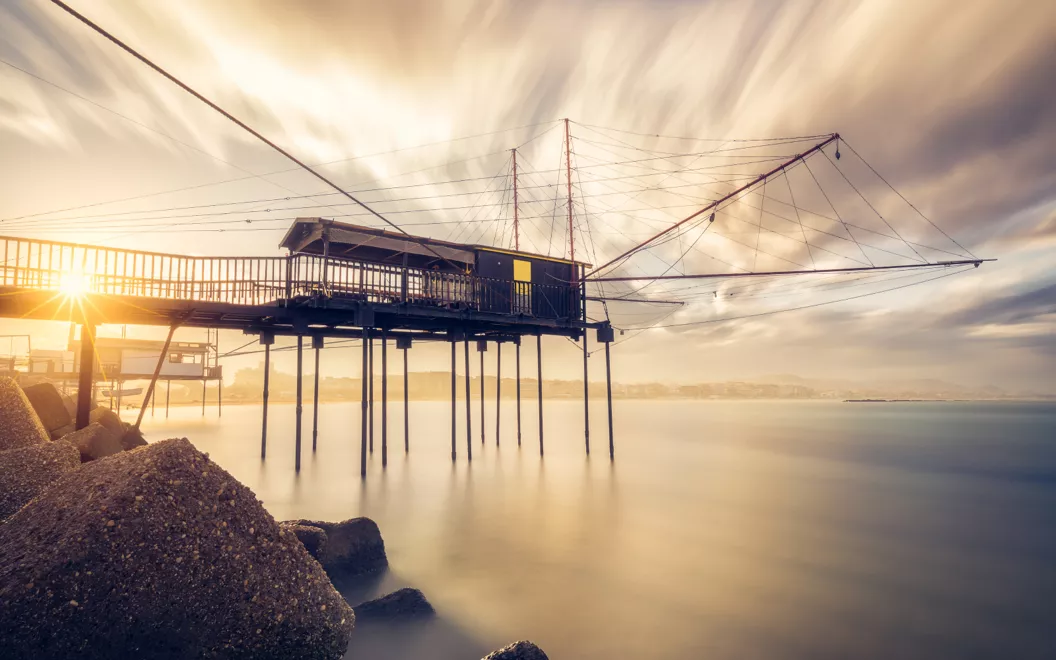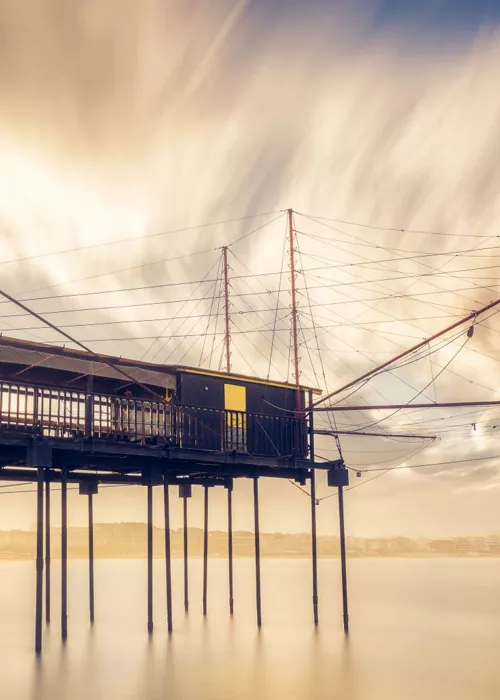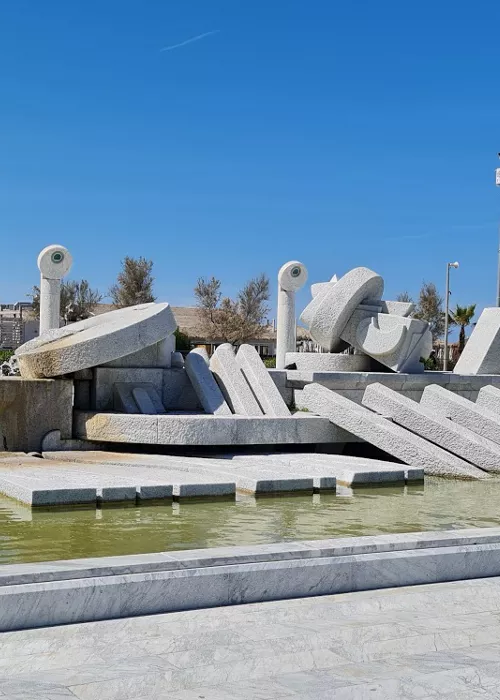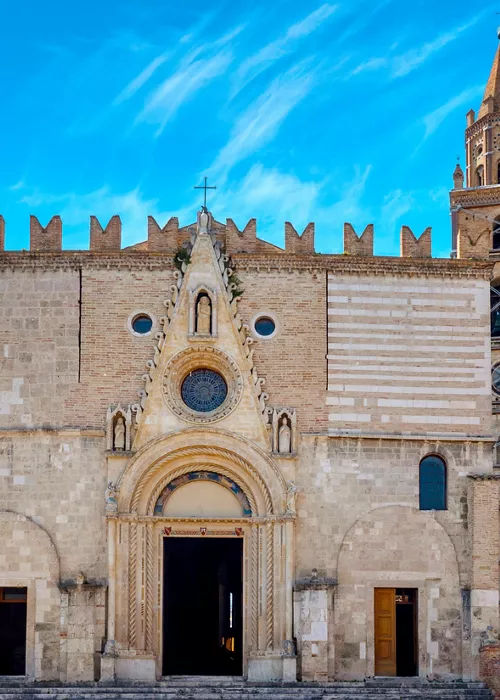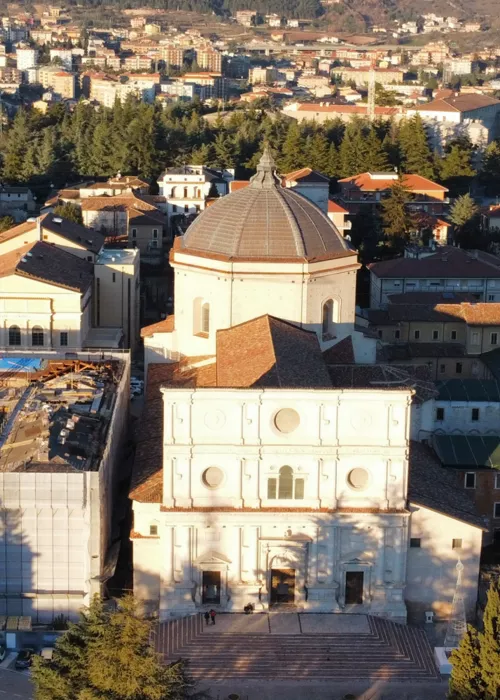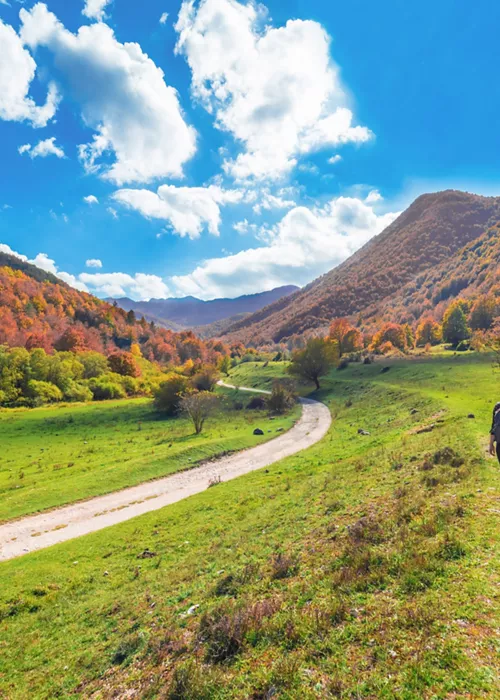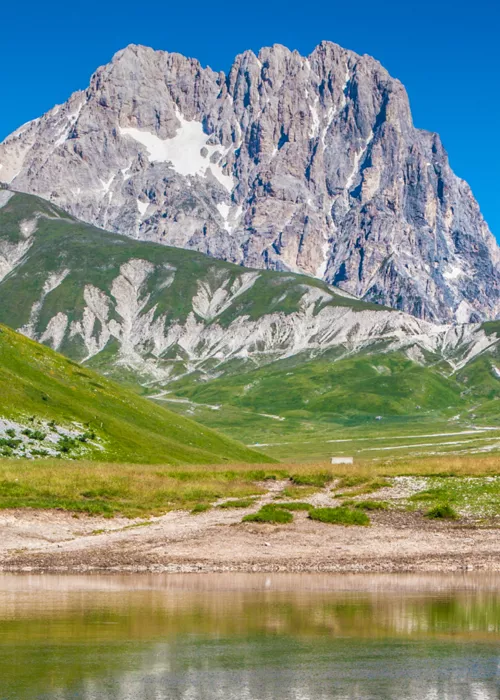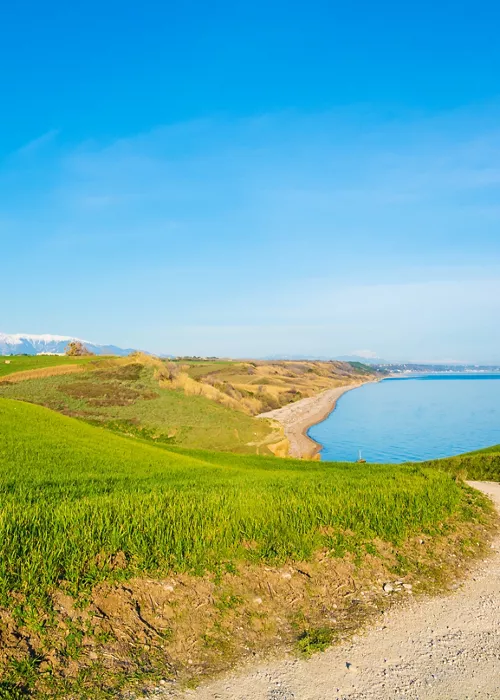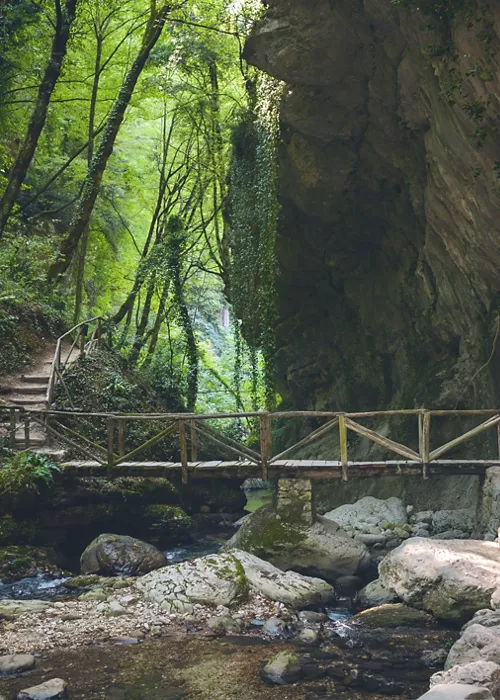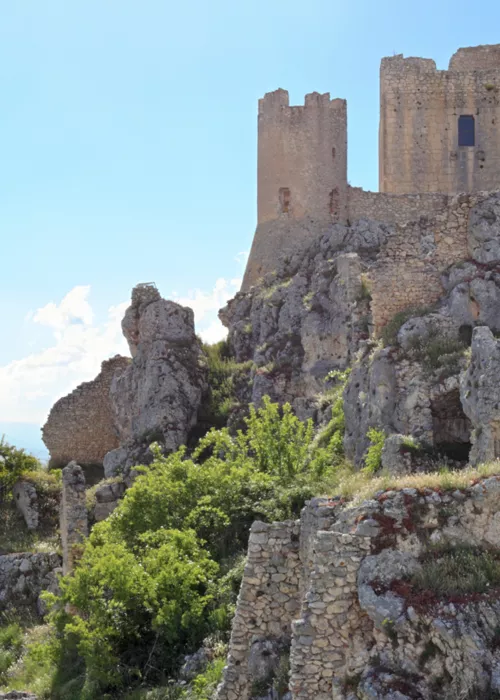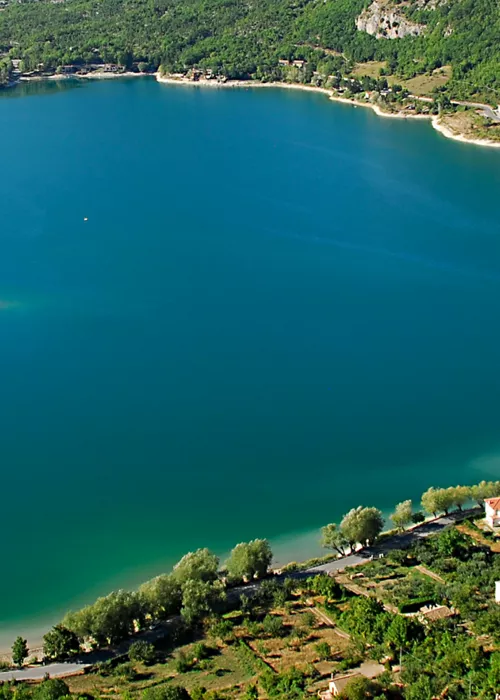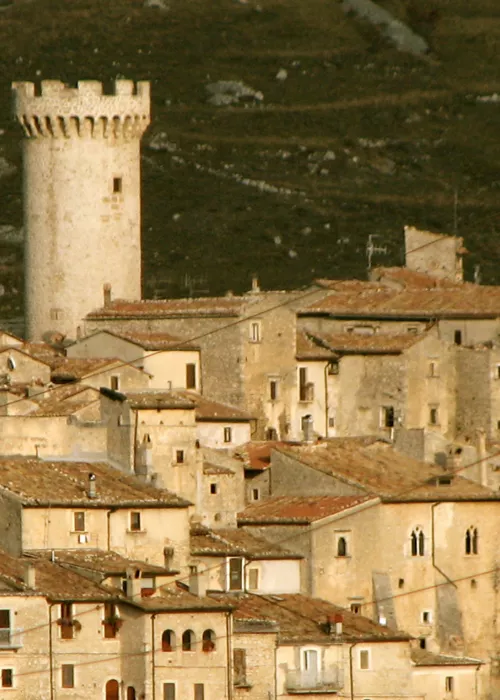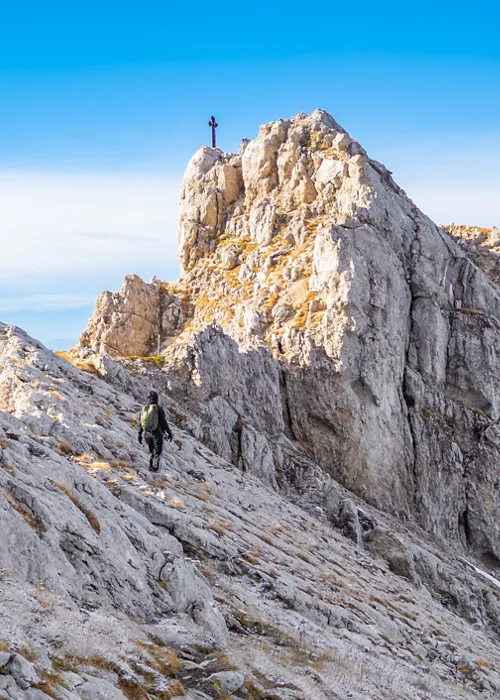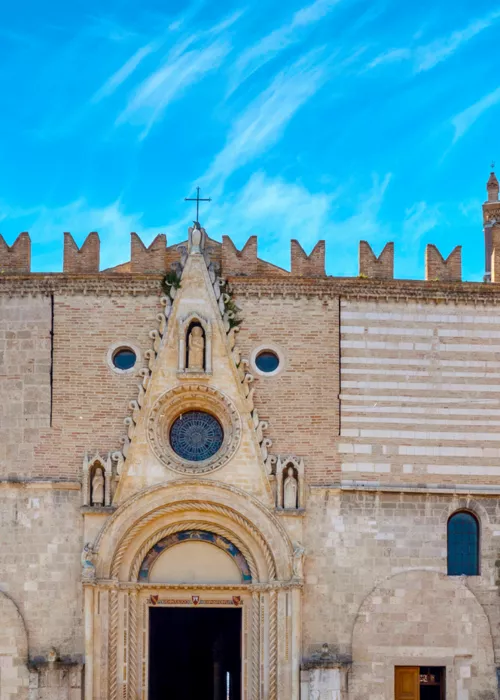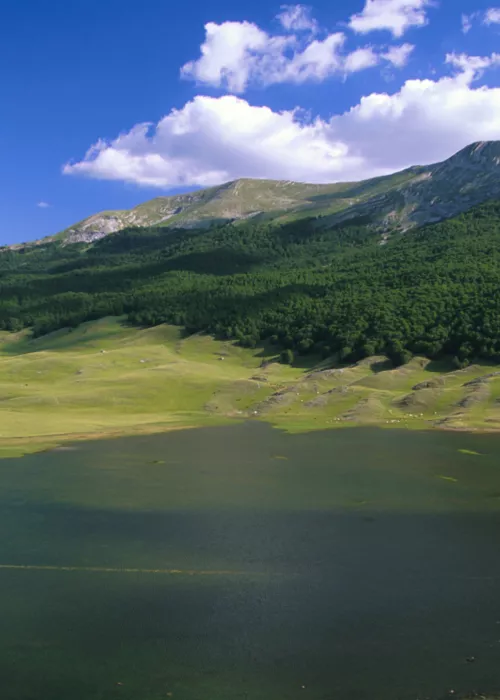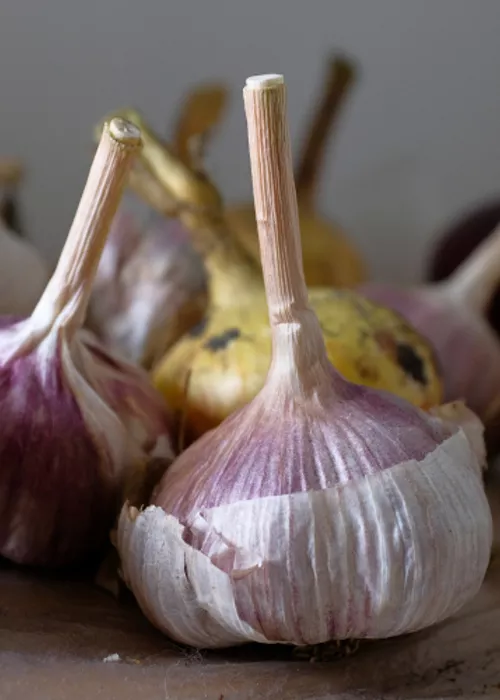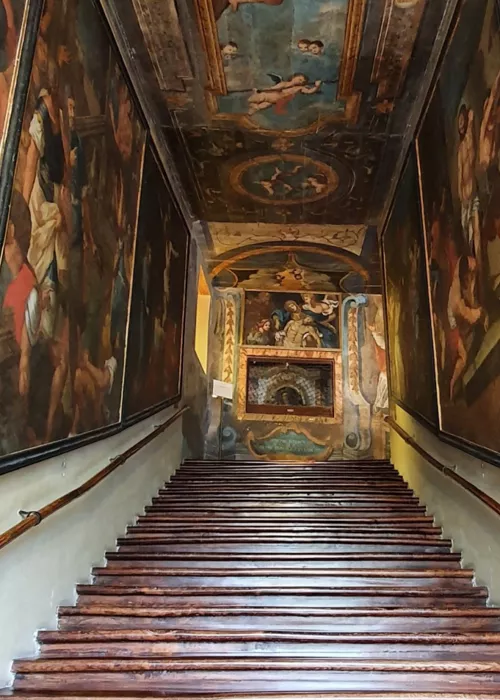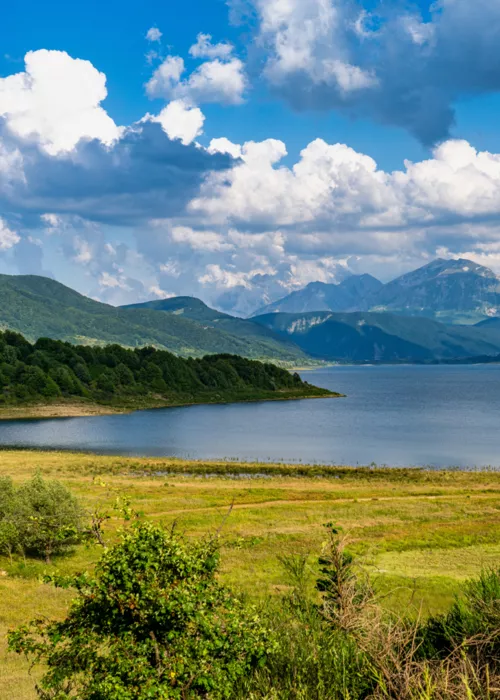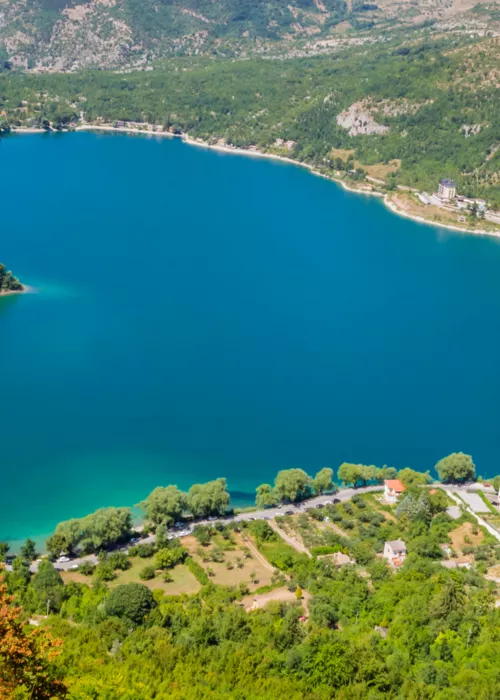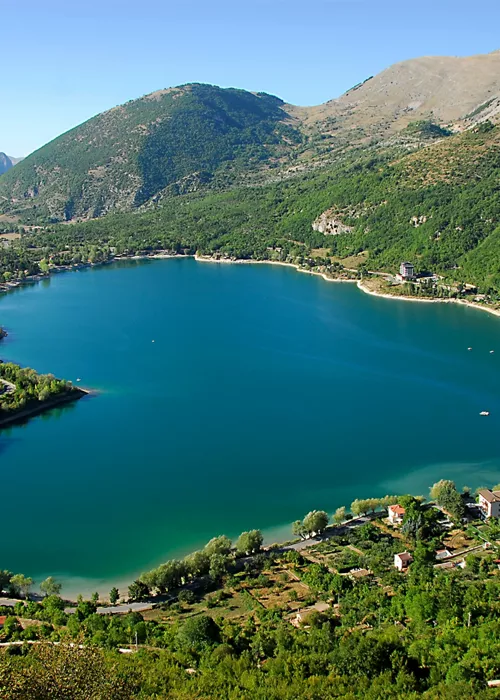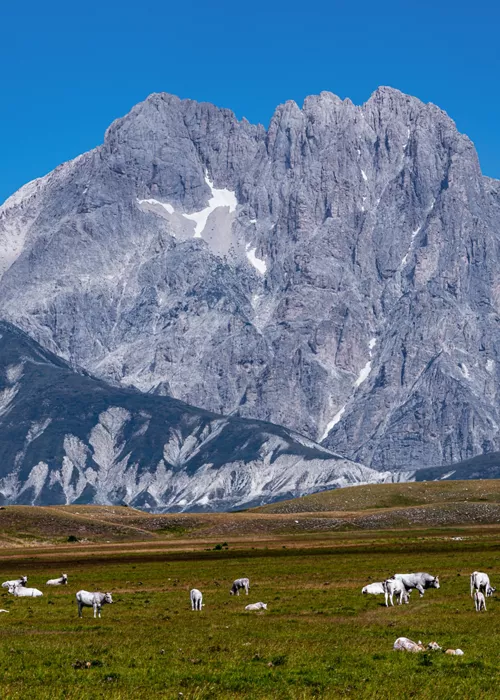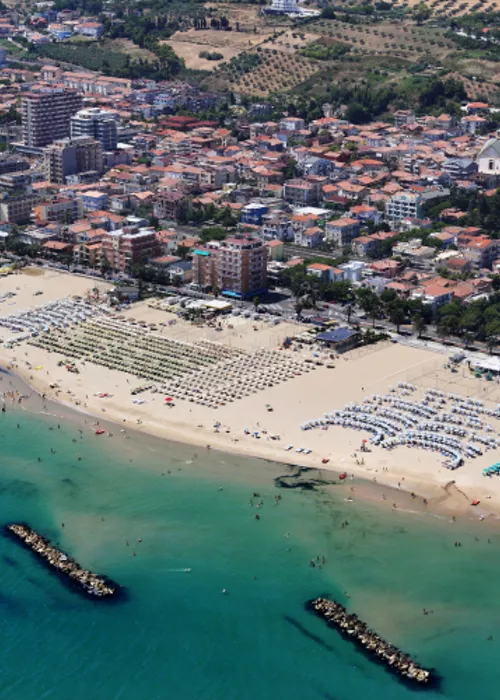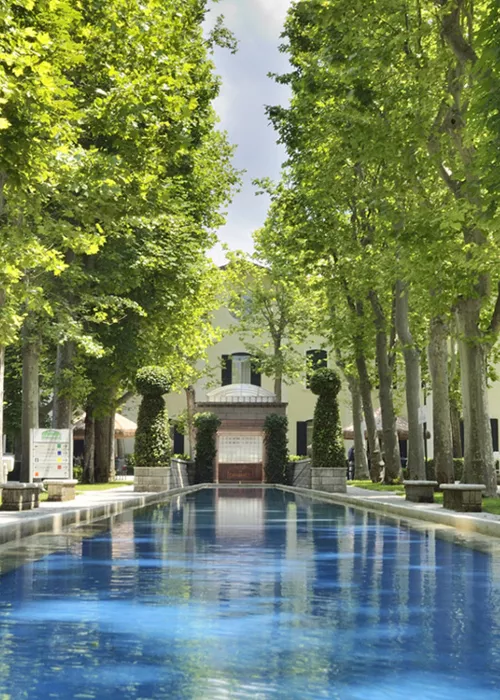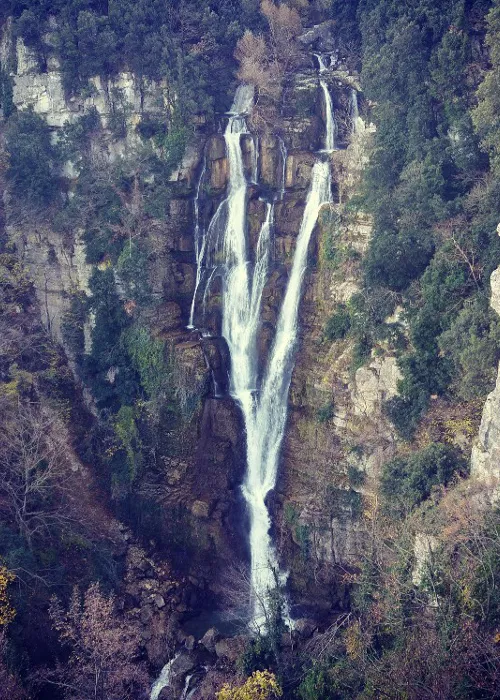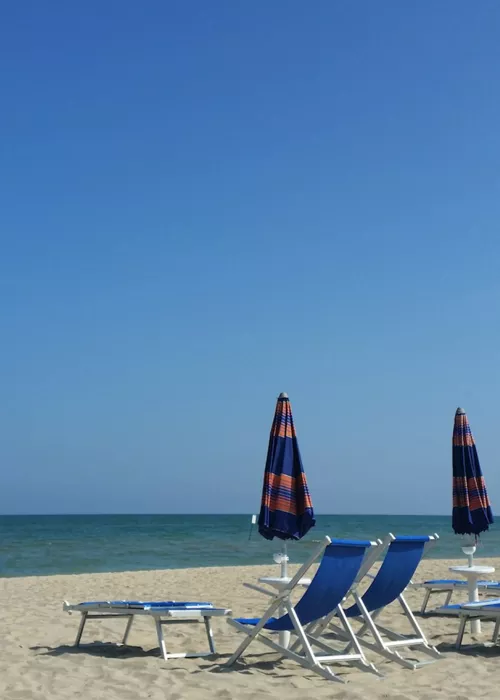Abruzzo, a plunge into nature between sea and mountains
4 minutes
Jagged coastlines and cool golden sand, lively beaches and quiet lidos, but also a nature characterised by mountains and forests, rich in plant species and unique fauna in a natural habitat inhabited by deer, chamois, wolves, bears, foxes and lynx.
Origin and historical background on Abruzzo
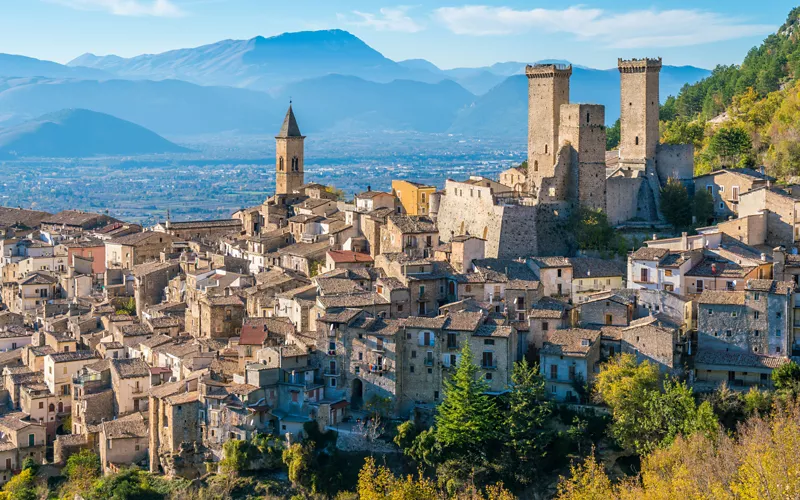
The history of Abruzzo is long and fascinating, especially that concerning its origins. The most widely accepted hypothesis is that Abruzzo derives from Aprutium, a popular evolution of (ad)Praetutium, the land of the Pretuzi, an ancient Italic population that lived in what is now Teramo.
Populated since prehistoric times, the region was home to groups of shepherds, all belonging to the Samnite lineage, who exploited the natural roads created in the long valleys for the transhumance of sheep: they travelled along mountain roads and gorges from the areas around L'Aquila to Foggia and back. Transhumance was the territory's main means of economic support.
Among the populations that marked the territory were the Marsi, the Peligni, the Vestini, and the Equi, who lived in walled cities with large sanctuaries. On the subject of the Vestini, and the Samnite wars, we still have a precious testimony today: the statue of the Capestrano Warrior, a soft limestone sculpture depicting one of their warriors. It is one of the most monumental and significant works of Italic art now preserved in Chieti.
The main cities of Abruzzo
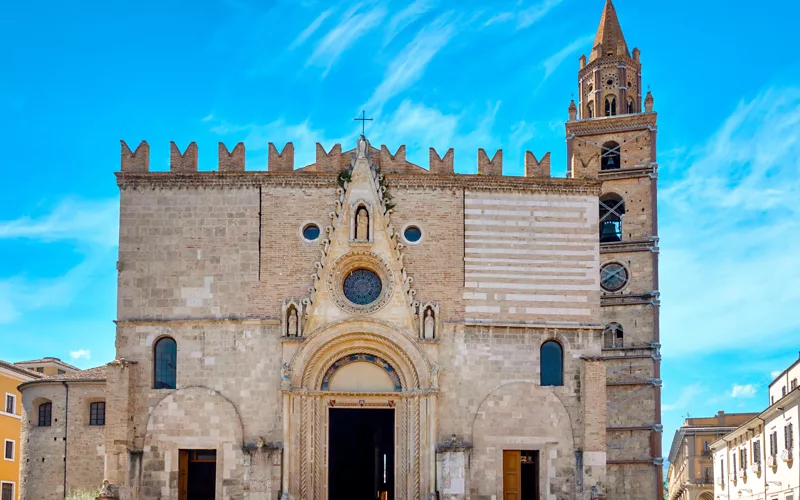
Abruzzo stretches from the heart of the Apennines to the Adriatic Sea and includes no less than 3 National Parks, a Protected Marine Area a Regional Park and over 30 Nature Reserves: it is the Europe's largest nature area characterised by pristine peaks, a gentle hill system and a beautiful sea.
Among the main cities in Abruzzo there are Pescara, washed by the Adriatic Sea and the birthplace of the poet Gabriele D'Annunzio, Teramo and L'Aquila.
Teramo is located on the slopes of the Gran Sasso, the iconic mountain of Abruzzo. A town of ancient origins, it is dotted with olive trees and rows of vineyards and is the most beautiful village in Abruzzo.
L'Aquila is one of the most important cities in central Italy, in a position that makes it one of the highest provincial capitals in the country. Despite being fiercely hit by the strong 2009 earthquake, the city has bravely rolled up its sleeves to bring back all its splendour. Pass by the Basilica of Santa Maria di Collemaggio to understand what we are talking about.
What to see in Abruzzo: 5 unmissable points of interest
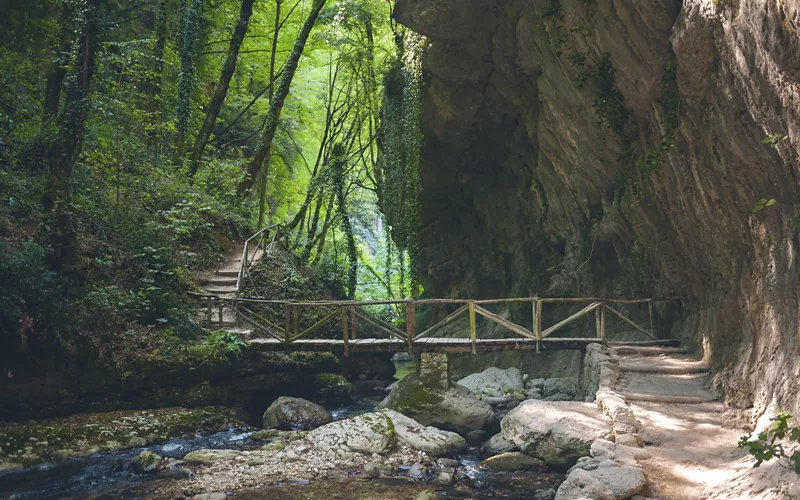
In addition to the most important cities of Abruzzo and a piece of Adriatic coastline full of incredible views, if you are in Abruzzo it is also worth visiting the Abruzzo National Park, the heart of the Apennines covering 50,000 hectares. Within it there are 12 municipalities in the province of L'Aquila with a bewitching historical and architectural heritage and ancient beech forests more than 500 years old, which have become a UNESCO World Heritage Site.
The next excursion can only be to the Gran Sasso and Monti Laga National Park, which encompasses high peaks such as the Monti Gemelli, Monti della Laga, Corno Grande and the Gran Sasso d'Italia chain, as well as small villages with ancient history. With its high peaks, the park offers wonderful landscapes and breathtaking views.
From the mountains to the sea: the Punta Aderci guided nature reserve is a wonderful protected area in Vasto, in the province of Chieti, with a typical dune environment. Fossacesia is a village along the Costa dei Trabocchi with picture-postcard beaches and fascinating landscapes.
For the last stage we return to higher altitudes: The Majella National Park is a natural oasis encompassing the great Majella massif, the Morrone mountains, the Pizi mountains and the Porrara mountain range.
It is home to seven state nature reserves where botanists have found more than two thousand plant species, some of which were found here for the first time.
The park is the ideal habitat for numerous animal species, some of them very rare, such as the Apennine wolf, the golden eagle, the Abruzzi chamois, the Marsican brown bear and the plover.
Unusual places in Abruzzo: 3 stages for the curious
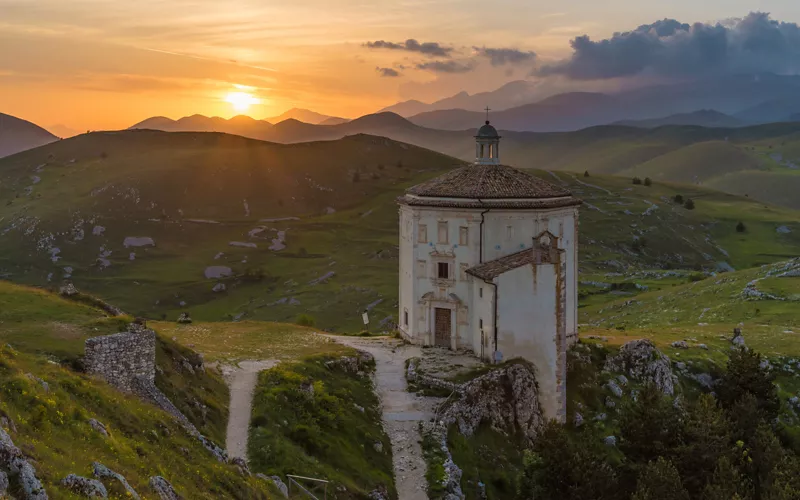
Rocca Calascio is the first of Abruzzo's unusual places ideal for the curious: it is an ancient and fascinating medieval village located on a hilltop at an altitude of 1,460 metres and houses a fortress built in a strategic position to control the Abruzzo valleys.
Also worth a visit is Lago di Scanno, a small mountain lake of natural origin with an unusual heart shape.
Finally, Santo Stefano di Sessanio, inside the Gran Sasso National Park, stands out in the Club of the Most Beautiful Villages in Italy: it is a precious jewel set among mountains with a rich past.
Typical products of Abruzzo: 4 delicacies to savour
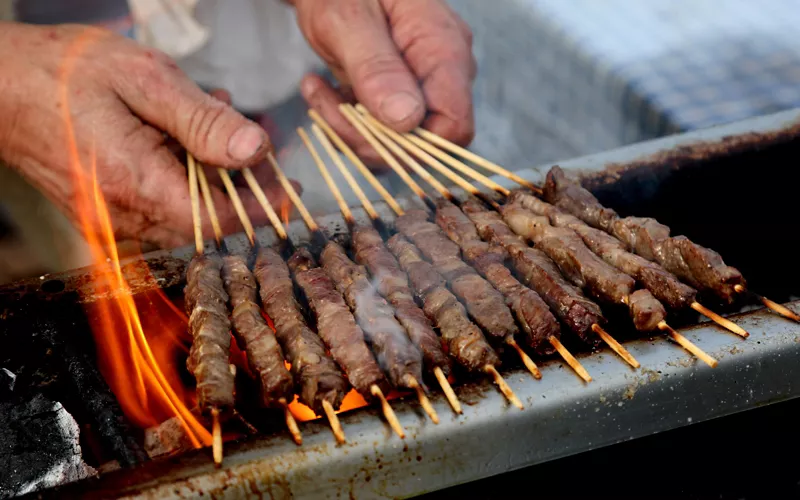
There are many typical Abruzzo products to taste, but among those not to be missed are the gentian, a typical liqueur obtained from the roots of the plant of the same name, and the confetti di Sulmona, almonds covered with a thin layer of sugar.
Those with a sweet tooth will also appreciate Abruzzo ferratelle, biscuits with a particular shape depending on the griddle on which they are baked, and Farindola pecorino, a tasty cheese with a lingering aroma and herbaceous notes.
And then there are the arrosticini skewers of sheep meat, typical of the Apennines, delicious to say the least. The only drawback: one pulls the other.
Events in Abruzzo: the 2 not to be missed
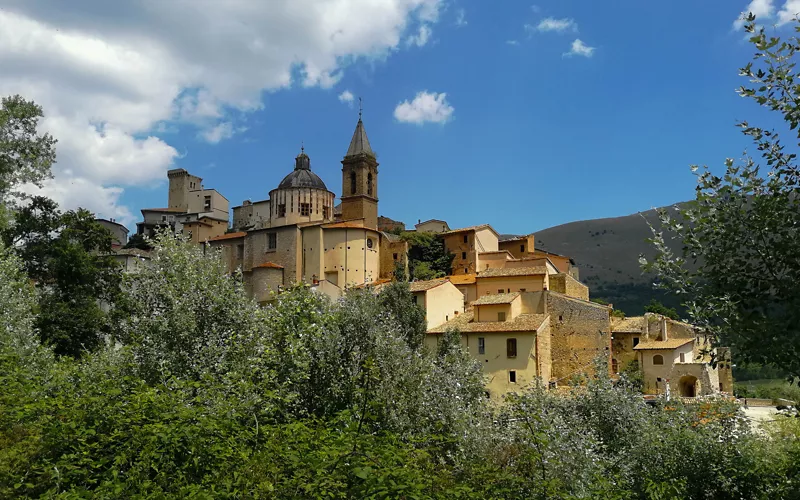
Among the unmissable events in Abruzzo there is the Perdonanza Celestiniana, the rite of the opening of the Holy Door that every time seems to mark a new rebirth in L'Aquila.
The Festival of the Serpari in Cocullo is celebrated every year on the first of May through an ancient ritual that turns it into both a sacred and profane feast dedicated to St Dominic the Abbot: the town square is filled with serpari with various reptiles with which it is possible to make contact to overcome fear and repulsion.

